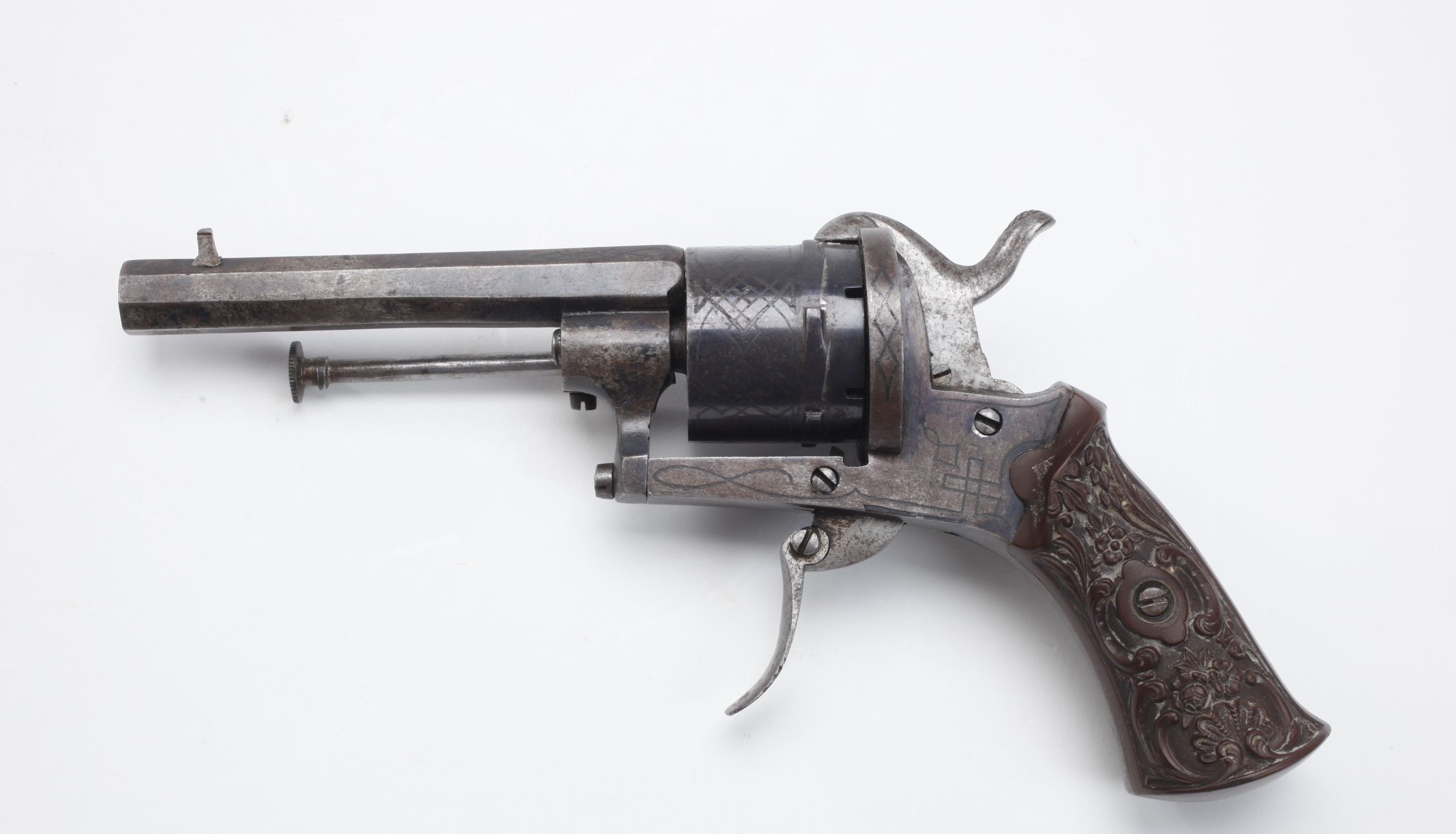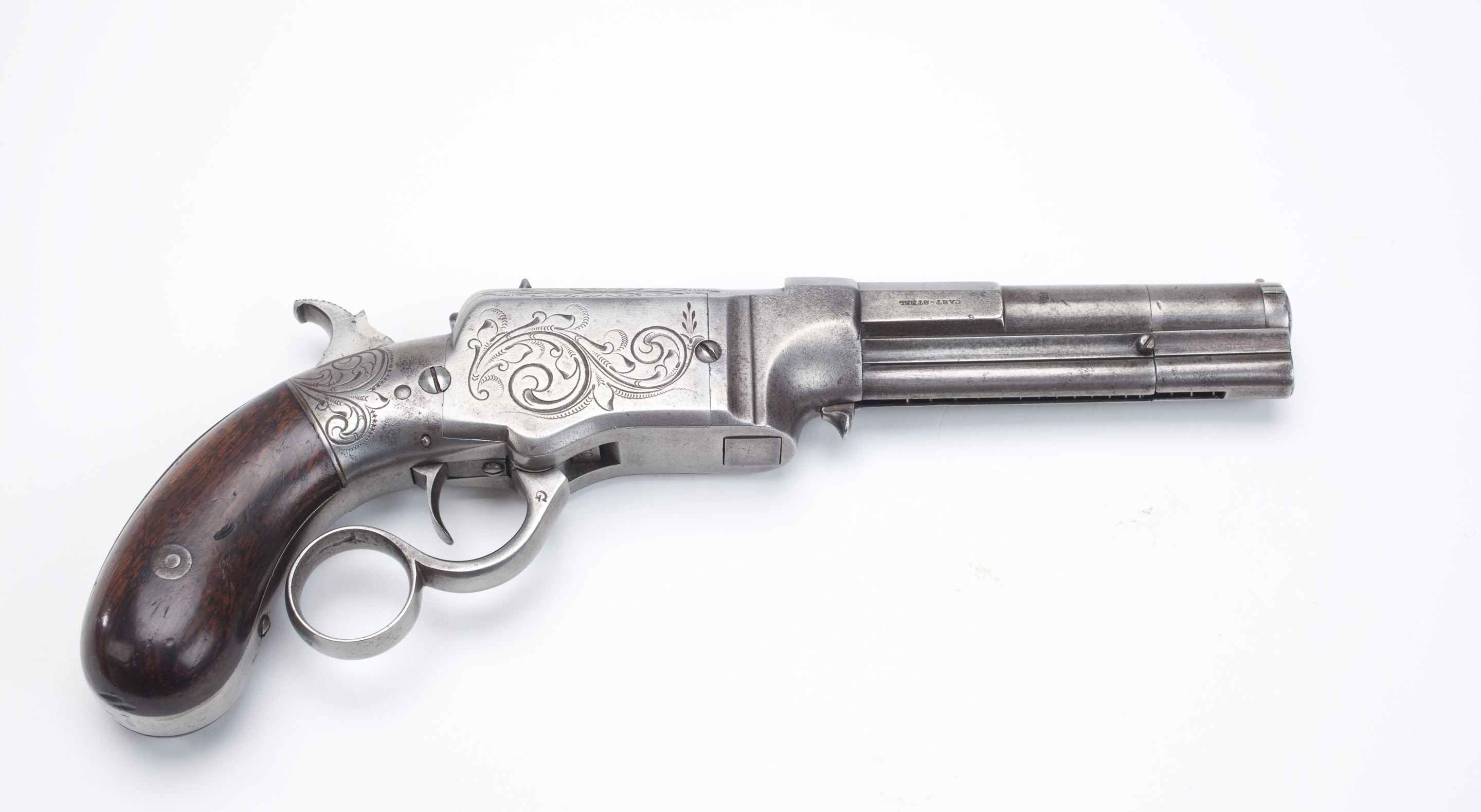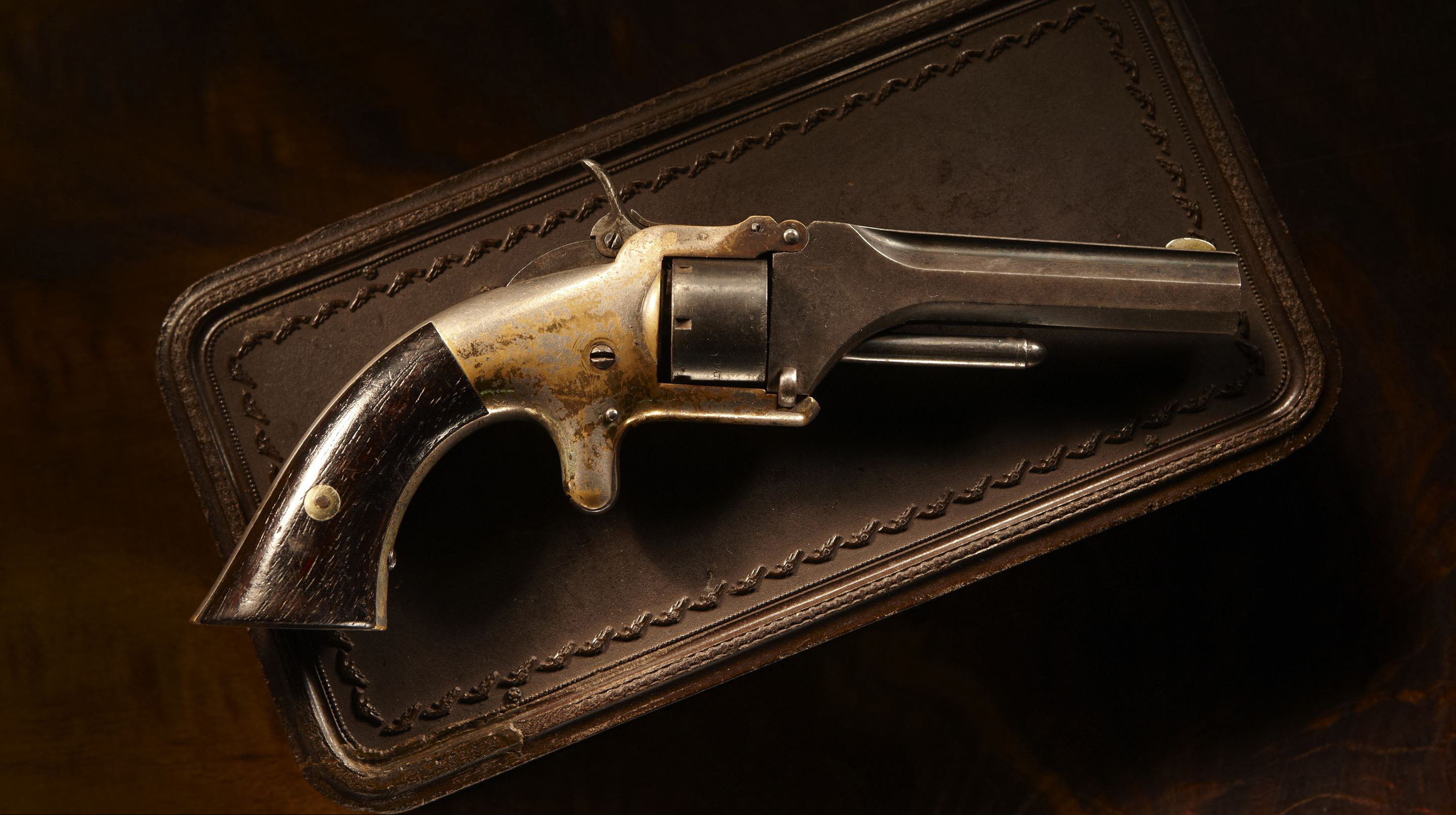Gallery

1 of 1
Belgian Single Action Pinfire Revolver
Pinfire revolvers were among the first metallic cartridge handguns in Europe. The Lefaucheux name is best known to students of history for the revolver of American Civil War-era fame, but the contributions of this father and son duo to firearms and cartridge design go well beyond this single distinction...
Read more here

1 of 1
Smith & Wesson Volcanic Lever Action Pistol
This predecessor of the Winchester lever-action rifle was produced by Horace Smith & Daniel Wesson, who later became famous for their revolver designs. In 1855, Smith & Wesson sold their interest to the newly-organized Volcanic Repeating Arms Company...
Read more here
Read more here

1 of 1
Smith & Wesson No. 1 1st Issue revolver w/ Original Gutta Percha Case
The gutta percha casing seen here is an original example. Most of these early thermoplastics have not survived; consequently, they are rarely seen today. The S&W No. 1, Ist Issue revolver model inside was manufactured from 1857 to 1860 and about 11,000 were made...
Read more here
Read more here

 More Like This From Around The NRA
More Like This From Around The NRA



